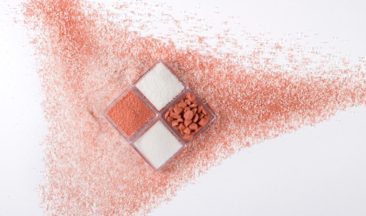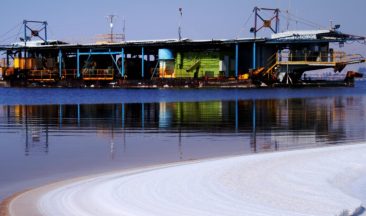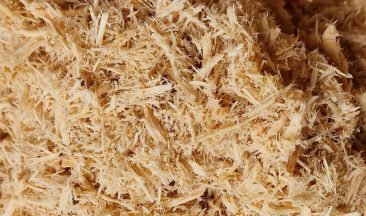The average person may not know it, but Bromine is an essential part of our lives. Everywhere we look, everywhere we go, there is something that either contains bromine, is derived from it, or relies on bromine during the manufacturing process.
Bromine is used in a wide range of industries, including textile, pharmaceuticals, oil and gas drilling, food and beverage, home furniture and appliances, electronics, and construction. You can even find it in power production, energy storage, and urban mining, among many others.
From the moment we wake up, bromine is there to improve our lives by protecting our food, reducing fire risks at home and at work, and bromine is essential in the production of soft drink bottles, synthetic garments, car tires, medicine, cosmetics, and so much more.
Bromine is amazingly ubiquitous – from the moment we awake until we fall asleep, bromine impacts our lives in ways we could never imagine!
What is Bromine?
This humble halide which occupies position 35 on the periodic table is of vital importance to many industries and is supplied as a dark brown fuming liquid with a characteristic odor reminiscent of bleach.
Bromine was discovered by a French pharmacy student, Antoine-Jérôme Balard in 1826 and got its name from the Greek word bromos which means stink. Interestingly, once dissolved in water its odor is not as noticeable as that of chlorine. Due to its highly reactive nature, bromine requires special precautions during handling and transportation.

The Bromine Market
The global bromine market in 2023 was worth US$ 3.5 Billion. It’s expected to achieve US$ 5.2 Billion by 2032 with a CAGR OF 4.25%. The market is made up of 30% HBr, 30% organobromine compounds, 20% bromine fluids, and 20% made up of other miscellaneous compounds, with Israel, Jordan, and China being the major producers.
The major use of bromine is in the clear brine fluids segment followed by fire retardants. China was the largest bromine consumer in the world.
What is Bromine Used For?
Bromine’s use is diverse and spans many facets of the industry and our daily lives. This amazingly versatile product is used in the production of essential battery materials, life-saving flame retardants, and protective biocides. Bromine derivatives have multiple applications, including the manufacture of plastics, rubber tires, and clear brine fluids for oil and gas exploration.
One of the most promising uses of bromine (and advanced bromine derivatives) is in the energy storage sector, specifically in the manufacture of bromine-based materials for smart, high-capacity batteries. Bromine is used in EV batteries and in the development of storage solutions for hybrid microgrids that run on clean and sustainable energy.
From improving fire safety in electronics and textiles to enhancing the durability of car tires and enabling efficient energy storage, bromine is found in an astonishing array of products and processes. These diverse applications highlight bromine’s significance in modern industry and everyday life.
We will explore these exciting uses of bromine in more detail below.
Oil and Gas Exploration and Drilling
The lion’s share of bromine use is in the oil and gas exploration and production industries where it is used as a highly saturated solution of bromine called clear brine fluids or CBFs.
As crude oil derivatives are still the major sources of energy and economies, oil and gas drilling remains critical to the functioning of the industrialized world. This will be the case until viable amounts of renewable energy enter the industrial stream.
These CBFs which are supplied by ICL to service companies, end up being used by the major players in the oil market. The CBFs are deployed in dedicated tanker ships which service the oil and gas on-site. ICL’s products are deployed in both off-shore and terrestrial oil and gas operations.
ICL is a global leader in the manufacture of completion fluids Our CBFs are used to improve safety, efficiency and productivity during the drilling pumping process. Because of their high salt concentrations relative to their surroundings, CBFs exert an outward or hydrostatic pressure to stabilize the well during exploration, cool the drill bit during drilling, and assist in the removal of drilling debris.
CBFs are also used to stabilize the walls of the well once complete and hence their alternate name of completion fluids. The clear brine fluid market was US$1 billion in 2019 and is expected to reach $1.3 billion by 2027.
Let’s take a look at flame retardants…

Bromine-Based Flame Retardants
Bromine is used extensively in fire retardants and ICL supplies bromine and bromine derivatives for these life-saving products.
Think of garments made of synthetic fabrics, electronic components, computers, TVs, tablets, cell phones, sockets, cars, airplanes, your sofa or recliner, refrigerator, building materials, and the air conditioner. They all contain flame retardants.
Flame retardants work by increasing the period between smoldering and ignition of an actual flame thus delaying the onset of the fire, allowing for its extinction, or giving people an opportunity to escape.
These bromine-based fire retardants release active bromine atoms when any of these materials are heated which interrupts the ignition process. In this way, flame retardants save lives and prevent the destruction of valuable assets
The global flame retardants market is about USD 7.2 billion in 2022 and is projected to grow at a CAGR of 5.1% making them a valuable member of the ICL product portfolio.
Bromine as a Biocide
ICL’s Dead Sea bromine is used in biocides to kill waterborne algae, fungi, bacteria, yeasts, and viruses. Biocides have been used in a variety of applications including water treatment, sanitation, textile, paper and pulp manufacture, healthcare, consumer products, agriculture, and food preservation. It does this by forming hypobromous acid when dissolved in water.
Bromine in Wastewater and Sanitation
Microbes accumulate during industrial processes and can affect their efficiency. Bromine biocides assist to maintain these efficiencies and prevent the formation of biofilm, a slime-like lining that develops in tubing and piping that makes the use of conventional disinfectants less efficient.
Industrial process water in effluent and cooling towers needs biocides to prevent microbial buildup so that it can be recycled or recirculated. Cooling systems in power plants can be endangered by algae and bacteria in their systems and depend on bromine solutions to stay safe and efficient.
The expression “smells like a brewery” has its roots in the brewing process wastewater which would be very smelly if not for the use of bromine biocides. Major paper and pulp installations use bromine to treat process water in a cost-effective manner and with a lower environmental footprint.
Our bromine biocides are often used in conjunction with ICL’s phosphoric acid and phosphates in these installations to neutralize contaminants and maintain pH.
Who doesn’t like the occasional swim or lounging in a spa or jacuzzi?
Spas, Jacuzzis, Fountains, and Swimming Pools
As nice as they may be these facilities are susceptible to algal and bacterial growth and rely heavily on disinfection to reduce the bioburden in the water. Chlorine is commonly used but can be a skin irritant. It can also decompose and corrode steel surfaces. Bromine comes to the fore in these situations. It remains in the water and doesn’t volatilize like chlorine so swimmers don’t inhale the gas.
Bromine has the advantage of being stable in hot water and is ideally suited to spas and jacuzzis. And as a bonus, bromine is a lot friendlier to people with sensitive skin.
Mercury Emission Control
Bromine helps reduce air pollution in power plants. Mercury reaches the atmosphere during the coal combustion process and with approximately 40% of global power still coming from coal, a considerable amount of mercury is released into the atmosphere.
Unfortunately, this mercury enters the food chain via seawater which in turn is taken up into plankton, and fish and ultimately eaten by man. The 2013 Minimata Convention of the UN has committed to the reduction of mercury emissions.
Fortunately, these mercury emissions can be reduced by the use of ICL’s Merquel bromine-based range of products that react with mercury in the furnace flue gases, effectively converting the volatile mercury into an ionic substance that can then be removed downstream. These “scrubber” units can effectively remove 90% of mercury from power plant emissions.
Bromine in Car Tires and Rubber Stoppers
When bromine is reacted with rubber it forms bromobutyl rubber. This form of rubber is highly impermeable to air and forms an excellent barrier to both air and other gases and fluids, hence its use in the manufacture of automobile tires.
Bromobutyl rubber is incorporated into regular rubber during the vulcanization process. This layer of bromobutyl rubber is then layered into the tire to contain the air inside the tire and not leak out.
The same technology is used in the manufacture of bromobutyl rubber pharmaceutical vial closures where an impermeable barrier is required for sterility but still needs flexibility for insertion into the vial neck during filling and to withstand repeated needle insertions.
Bromine in Plastics
Bromine plays a very important role in the plastic industry. When employed as a polymeric epoxy, it is an almost universal flame retardant in PET ( Soda bottles), ABS (Automotive parts), and synthetic fabrics ( polyester and polypropylene).
Fast forward to the 21st Century and the demand for renewable energy.
Bromine-Based Energy Storage
Renewables are a wonderful source of energy with a very low environmental impact and almost infinite supply. The downside side is the storage of energy. The sun doesn’t shine by night and the wind doesn’t always blow. Tides ebb and flow resulting in interruptions in the energy supply.
To fully capitalize on these resources, energy must be stored in a compact, on-site system with a low environmental impact at an affordable price. To date, the gold standard for energy storage has been the lithium-ion battery commonly known as Li-Ion. Newer innovative scaleable batteries have been developed which are based on bromine ions in solution.
Bromine’s abundance, price, chemistry, and performance make it a preferred technology for energy storage. ICL R&D is working on the development of cheaper batteries, with longer life, and higher capacity.
More on the subject:
What Are Biocides?
The Next Energy Revolution – Bromine-Based Flow Batteries
What are Completion Fluids?
ICL: the World’s Largest Producer of Bromine and Bromine-Based products
As the world’s leading bromine producer, ICL supplied over 33% of the almost 1,000,000 metric tons of all bromine used in 2021.
ICL’s Bromine manufacture is carried out at our Dead Sea, one of the richest sources of concentrated bromine and potash on earth. Here, the concentration of bromine is a staggering 4500-5000 ppm. At the Sdom plant, the Dead Sea brines undergo solar evaporation.
The end-brines remaining after precipitation of Sodium Chloride, Carnalite, Magnesium Chloride and Calcium Chloride, have a bromine concentration as high as 12000 ppm. Then, the concentrated Dead Sea water is reacted with chlorine gas in the presence of superheated steam to produce the pure bromine liquid.
Bromine can also be extracted from seawater where it is present in much smaller concentrations as well as from subterranean brines.
Shipping of bromine takes place in dedicated container-mounted Bromine ISO-Tanks. For this purpose, ICL maintains a fleet of one hundred ISO tanks, each with a capacity of 20 tons. To further prevent reaction with stainless steel, each vessel is coated with a layer of inert lead.
ICL’s Bromine manufacture is carried out at our Dead Sea plant at Sdom in Israel. Here the concentrated Dead Sea water is reacted with chlorine gas in the presence of superheated steam to produce the pure bromine liquid.
There are 3 major mineral pillars underpinning the ICL business – bromine, phosphate, and potash. These are the starting materials for most of our downstream products and are part of a fully integrated value chain developed by the business over decades.
Bromine is Everywhere
As you can see, bromine impacts our lives from the time we wake up until we retire to bed. It’s in our beds, bedding, cosmetics, pharmaceuticals, cars, and batteries. It’s used in office chairs and the production of office paper. It’s used in the cooling towers in industry and our HVAC systems at work.
ICL is a global manufacturer of organic and inorganic intermediates and bromine-based compounds. With a heritage dating back 100 years, ICL has maintained an unwavering focus on innovation, striving to achieve the highest standards across all aspects of our business and continuing research and development on bromine-based compounds to discover new and exciting uses for what was once known as the “stench” element.







